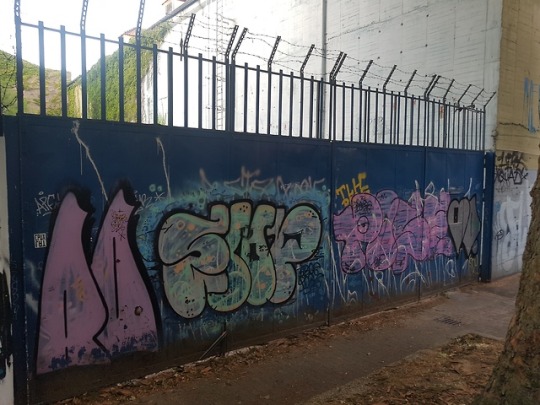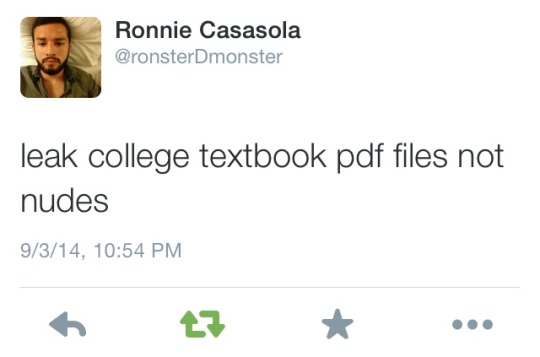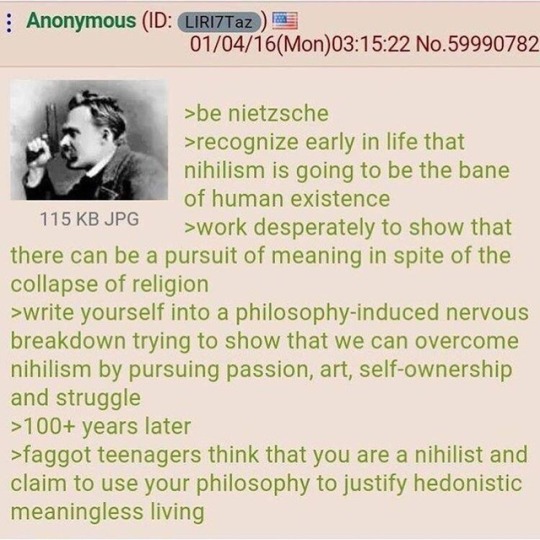Text

//reading into reality// picture by me :D
#aesthetics #tumblrart #artsy #artist #literaryart #collage #reading #bookworm #art #artbyme
3 notes
·
View notes
Photo


Street art in Cologne, (köln) Germany. Love the sassy fox!
#street#streetphotography#streetphoto_color#street art#street aesthetic#germany#travel#urbanadventures#cities#grafitti#foxy
7 notes
·
View notes
Photo

Taken at @mocomuseum in amsterdam
#amsterdam#art exhibition#banksy#street art#grafitti#laughnowcrylater#oneday#monkey#latestagecapatalism#culturalcritic#art#contemporaryart#stencilart
2 notes
·
View notes
Photo

Today’s world is purple
#purple aesthetic#pink aesthetic#dreamscapes#dreamscape#vaporwave#aesthetic#photography#dream#mood#sky#dramatic sky#feelings#seetheworldintechnicolor#nature#treescape
62 notes
·
View notes
Photo


Night aesthetic
5 notes
·
View notes
Text
“I drank coffee and read old books and waited for the year to end.”
— Richard Brautigan, Trout Fishing in America (via litverve)
8K notes
·
View notes
Photo



Abstract by @tanyashatseva
#contemporaryart#abstract#surrealism#surrealart#galaxy#paint#painting#artists on tumblr#artistsoninstagram
10 notes
·
View notes
Photo


Tess Johnson
68K notes
·
View notes
Photo

#aesthetic#moodlike#feelings#art on tumblr#contemporaryart#latenights#videogameaesthetic#vaporwave#purple aesthetic#i love you
14K notes
·
View notes
Photo

Before coming to University I’d never had to conduct my own research study, let alone write about one. Whilst different types of studies are structured differently depending on the expectations and requirements of the relevant academic school, most studies benefit from the inclusion of an abstract. This post sets out to establish the basic motivation for and the benefits of having an abstract, as well as setting out to provide a basic framework of what an abstract should include.
What is an abstract?
An abstract is essentially a paragraph that summarises a research study, whether that study is a review of literature or a scientific study you designed and conducted yourself. It concisely delineates the key aspects of your study, and its purpose is, for want of a better way to put it, to tell the reader exactly what your research paper says… Without them having to read it. In the real world, published research studies are often presented in conferences and meetings, and it is sometimes implausible for everyone who is attending these conferences to read a 50-page research study in its entirety. What do they do instead? They read the abstract. If the abstract is well written, they will have a good indication of the successes and pitfalls of the study at hand. If it’s poorly written… They won’t. This isn’t grounds to be discouraged, though. Your teachers won’t be grading you solely on your abstract, but it’s still useful to feature one in your project write-ups to show your teacher that you can do it. But it’s not necessarily good enough to purely be able to write an abstract. The real rattlesnake is being able to write an abstract well.
How do I write an abstract?
In order to write an abstract, you essentially need to know the results or predicted results of your study. If your study is more of a review of literature or state of the art, then you need to have done all of the relevant readings and come to your conclusions based upon those readings in order to be able to write the abstract. This means that you usually don’t write your abstract until after you’ve written the main body of the report. Another benefit of writing your abstract after you’ve written your report is that you have all of your information collated in one structured, organised place which, in turn, will help you write a structured, organised abstract.
Typically, research studies are divided into sections. Those sections tend to be:
Introduction
Literature Review
Methodology
Results
Discussion
The methodology and results sections can potentially be excluded in more literature based research studies. Regardless, you should feature something from each of these sections in your abstract. This gives the reader a better idea of what is included in the main body of your paper without them having to try and find and make sense of the information themselves. It’s very important, though, that you choose the right information from each of these sections. Poorly selected information makes for a poorly structured abstract. I work off the basis that each of the above sections should be summarised into one or two sentences in the abstract. The bullet points below provide guidelines for what each of these sentences should be.
Sentence 1 (Introduction): A sentence explaining the main motivation behind the study (why you chose this topic)
Sentence 2 (Literature Review): A sentence explaining what the literature says on the matter and what you aim to contribute to the field with your study (e.g. You were able to identify a gap in the research)
Sentence 3 (Methodology): A sentence describing the method you adopted in order to achieve your aim
Sentence 4 (Results): A sentence summarising that which your results indicate
Sentence 5 (Discussion): What your results mean, and ideas for future research
You should ideally aim to write 150-250 words for your abstract. Distributed across 5 sentences (using 200 words as a median), then you would be expected to write a maximum of 40 words for each sentence/section. This is just a guideline, however. You can write more than one sentence per section if you so wish, and you can weight each sentence differently in terms of how many words there are in each. For example, you can write a 15-word sentence for your Introduction sentence, but your Discussion statement might be 65 words long, spread across multiple sentences. Just try to keep the whole paragraph under a maximum of 250 words.
I’m including here a real example of an abstract that I wrote for a research study I conducted in part completion of one of my University modules:
The debate is ongoing regarding which classroom strategies work best in terms of developing bilingual students’ languages whilst simultaneously furthering their knowledge of the subject matter. Many academics from an array of fields argue for the linguistic and academic benefits of translanguaging for the bilingual individual, but the lack of empirical supporting evidence for these claims is abundantly clear. The current study aimed to examine the effectiveness of translanguaging as one such classroom strategy. This was achieved by means of an experiment which evaluated how well newly learned information was retained by bilinguals who had made use of the translanguaging method, as compared with monolinguals who had not. The results find that the bilinguals in this study did in fact consistently outperform the monolinguals both on the individual and group levels. Recommendations for further study are made, and if these results are replicated, they suggest that translanguaging is an effective learning tool for bilinguals.
I have worked backwards from this abstract to form the following sentences that should provide a framework for an abstract for any research study, or at least gives you an idea of what should be included without all the Linguistics jargon I’ve included above:
Introduction: The issue of [A] is highly debated in the field of [B] with some academics arguing that…
Literature Review: Past studies demonstrate that [C], however, there is contradicting evidence regarding [D]. This study aimed to [E].
Methodology: This was achieved through [F].
Results: The results of this study indicate that [G].
Discussion: These results support the hypothesis that [H]. Should these results be replicated in future studies, they would indicate that [I].
These sentences should be kept as concise as possible, and it is important that your paper actually does what your abstract says it does.
Don’t include information in your abstract that isn’t discussed at greater length in the main body of your report. Your abstract should be unbiased, in that it should not include personal opinions. It can be tempting, if your results contradict the hypothesis you’re proposing, to justify this inconsistency in your abstract. Instead, you should lay out the basic facts of your findings in your abstract and only include your interpretation of the results in the results section of the actual report.
It is important to note here that the above are example sentences that are relevant to my experiences with conducting research studies. Literature based research studies will likely not contain a methodology section, and the results section will look a little different, but I hope the general idea is made clear here.
How do I format my abstract?
From my experience, the abstracts in scientific papers is always at the beginning of the paper, just before the introduction. It is usually italicised and indented, and in the same font as the remainder of the paper.
When you’re working to a word limit, the abstract usually isn’t included in your word count but I advise that each of you check with your schools before submitting work that includes an abstract. I’m aware that in the US, you tend to have a set number of pages to work towards as opposed to a set word limit, in which case the abstract will of course contribute towards the final length of your paper as there is no way of discounting the space the abstract takes up on the page.
Also, you don’t need to include references/citations in your abstract. As I mentioned before, you shouldn’t be saying anything in your abstract that you don’t discuss in the paper. This means that whatever you say in your abstract that derives from somebody else’s work, you should be referencing/citing that work in your main report anyway. This is also further motivation for writing your abstract after you’ve completed writing your paper. That way you know exactly what you should and shouldn’t say in your abstract.
I hope this helps! I’m really sorry for the long post but I don’t know how to do that snazzy “Keep Reading” link thing. If you have any questions at all I’ll do my best to answer them helpfully. Just pop into my ask box.
2K notes
·
View notes
Text
Can’t remember what my personality is supposed to be like I wish I had written it down
247K notes
·
View notes






